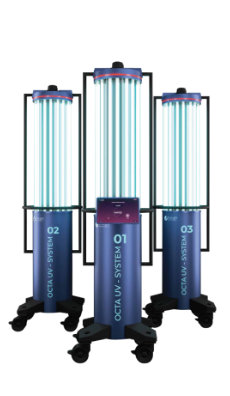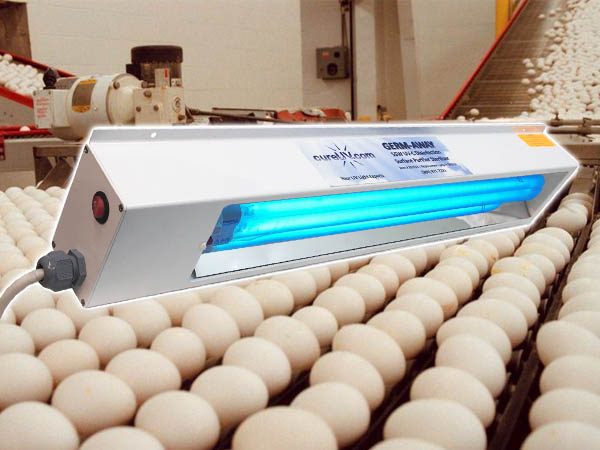Transforming Cleanliness Specifications: The Role of UV Surface Disinfection in Health and Safety
Transforming Cleanliness Specifications: The Role of UV Surface Disinfection in Health and Safety
Blog Article
Using the Possible of UV Sanitation: Shielding Health And Wellness and Hygiene
As the globe comes to grips with the recurring pandemic and the constant threat of transmittable illness, the significance of keeping health and health has actually never ever been much more apparent. In this context, harnessing the capacity of UV sanitation emerges as an encouraging remedy. UV disinfection, a technology widely used in various industries, has confirmed effective in eliminating harmful pathogens. There is a lot even more to check out behind the scientific research of UV sanitation and its applications. From comprehending the systems at play to executing this modern technology in our every day lives, this discussion aims to clarify the capacity of UV sanitation and its function in protecting our wellness and health.
Understanding UV Sanitation
UV sanitation is a very effective and widely utilized approach for guaranteeing and getting rid of harmful pathogens health and hygiene. This method utilizes ultraviolet (UV) light to suspend microbes by damaging their DNA and preventing them from replicating. UV sanitation is particularly effective versus bacteria, viruses, and other microorganisms that can cause conditions and infections.
The principle behind UV sanitation is basic yet powerful. When UV light is sent out at a details wavelength, it penetrates the microbe's cell wall surface and disrupts its genetic product. This procedure, recognized as photodissociation, causes the formation of thymine dimers, which stop the microbe from replicating and providing it safe. UV sanitation can be used in various settings, including water therapy plants, healthcare facilities, food processing industries, and air purification systems.
One of the benefits of UV disinfection is its ability to properly and effectively get rid of a vast array of virus without the requirement for chemicals or additives. Unlike various other disinfection techniques, such as chlorine or ozone, UV disinfection does not present harmful by-products or chemical deposits right into the environment. Additionally, UV disinfection is a non-contact process, which implies that it does not call for physical call with the microorganisms, reducing the threat of cross-contamination.

The Science Behind UV Sanitation
The effectiveness of UV sanitation depends on its ability to interfere with the genetic product of microbes, providing them not able to duplicate and thus removing their hazardous potential. UV, or ultraviolet, radiation is a kind of electromagnetic radiation with wavelengths shorter than noticeable light. It is categorized right into 3 types: UV-B, uv-a, and uv-c. UV-C radiation, specifically, has the quickest wavelength and the highest possible power. This high-energy UV-C radiation is most effective in sanitation applications because it can penetrate the cell walls of bacteria and harm their DNA or RNA.
When microbes are revealed to UV-C radiation, the power is taken in by their hereditary product, creating bonds to damage and creating chemical reactions that disrupt their capacity to recreate. This stops the microorganisms from spreading out and replicating infection. UV disinfection is especially effective against bacteria, fungis, and infections, consisting of typical pathogens such as Escherichia coli, Salmonella, and Influenza.
The scientific research behind UV disinfection is supported by extensive research study and studies. It has actually been revealed that direct exposure to an enough dose of UV-C radiation can achieve a high degree of sanitation, commonly surpassing 99.9% efficacy in eliminating bacteria. Nonetheless, it is essential to keep in mind that the effectiveness of UV disinfection relies on various aspects, including the intensity of UV-C radiation, exposure time, distance from the UV resource, and the vulnerability of the microbe to UV radiation.
Applications of UV Sanitation
Offered the comprehensive research study and effectiveness of UV disinfection in disrupting the genetic product of microbes, it is very important to discover the various useful applications of this modern technology. UV sanitation has actually verified to be a beneficial device in a large range of markets where preserving a clean and safe atmosphere is crucial.
One significant application of UV disinfection is in healthcare setups. UV light can be made use of to disinfect surfaces, equipment, and even the air in healthcare facilities and medical centers. This helps to minimize the threat of healthcare-associated infections and guarantees a much safer setting for patients and health care workers.
One more important application remains in the food and beverage sector. UV sanitation is utilized to deal with water and get rid of hazardous pathogens, such as E. coli and Salmonella, from the manufacturing procedure. uv surface disinfection. This guarantees the safety and high quality of the items we eat
UV sanitation is also extensively utilized in water therapy plants and wastewater therapy centers. It is a reliable approach for damaging damaging germs, infections, and parasites that can be present in water resources. This helps to give tidy and safe drinking water to communities and secure the setting from air pollution.
In addition, UV sanitation is employed in the pharmaceutical industry to decontaminate devices and keep the honesty of items. It is additionally utilized in labs and study centers to avoid contamination and guarantee exact results.
Benefits of UV Disinfection Innovation
One significant advantage of utilizing UV disinfection modern technology is its ability to successfully eradicate microbes without using severe chemicals. This is specifically useful in numerous settings, such as medical care facilities, water therapy plants, and food handling sectors, where the existence of harmful pathogens presents a substantial danger to public health and wellness and security.
Unlike standard sanitation techniques that depend on chemicals like chlorine or ozone, UV disinfection technology utilizes ultraviolet light to target and destroy the DNA of bacteria, properly neutralizing their capability to recreate and cause infections. This procedure not only eliminates the demand for possibly hazardous chemicals however likewise minimizes the risk of chemical deposit or results staying in the treated environment.

Furthermore, UV sanitation innovation is eco-friendly. As it does not depend on the use of chemicals, it removes the requirement for their disposal, production, and transportation, lowering the general carbon impact associated with sanitation processes. In addition, UV disinfection systems have a longer lifespan compared to chemical-based approaches, leading to much less regular substitute and more decreasing waste.
Applying UV Disinfection in Daily Life
To This Site effectively implement UV sanitation in every day life, companies and individuals can incorporate mobile UV sanitizing tools into their health regimens and cleaning up practices. These gadgets are designed to discharge ultraviolet light, which has actually been verified to kill or suspend a variety of microbes, including germs, viruses, and fungi. By utilizing portable UV sanitizing devices, people can sanitize typically touched surface areas and items, such as cell phones, keys, doorknobs, and laptop computers, decreasing the danger of spreading out germs and infections.
Along with including portable UV disinfecting gadgets, it is essential to comply with proper guidelines Look At This and recommendations for reliable UV disinfection. This consists of making certain that the tool is utilized appropriately and for the recommended duration to accomplish ideal disinfection results. It is also critical to focus on precaution, such as using safety eyeglasses and staying clear of straight exposure of the UV light to the skin.

Additionally, companies can execute UV sanitation technology in various settings to improve hygiene methods. Medical facilities and medical care centers can use UV disinfection robots to disinfect individual rooms, running theaters, and various other high-touch areas. Food handling sectors can incorporate UV disinfection systems into their assembly line to boost food security and prevent contamination.
Verdict
In final thought, UV sanitation modern technology holds fantastic potential in protecting health and wellness and hygiene. With its numerous benefits, UV sanitation is a beneficial device for preserving a tidy and healthy environment.
Unlike other sanitation approaches, such as chlorine or ozone, UV sanitation does not present unsafe spin-offs or chemical deposits right into the setting. It is vital to keep in mind that the effectiveness of UV sanitation depends on various elements, including the strength of UV-C radiation, direct exposure time, distance from the UV source, and the sensitivity of the microorganism to UV radiation.
One more advantage of UV sanitation modern technology is its ability to supply quick and constant sanitation. Unlike guidebook cleansing methods, which can be time-consuming and call for significant labor, UV sanitation systems can be automated and run constantly, Visit This Link ensuring constant sanitation without human intervention.To efficiently apply UV disinfection in everyday life, people and organizations can incorporate mobile UV disinfecting gadgets into their health regimens and cleaning methods.
Report this page